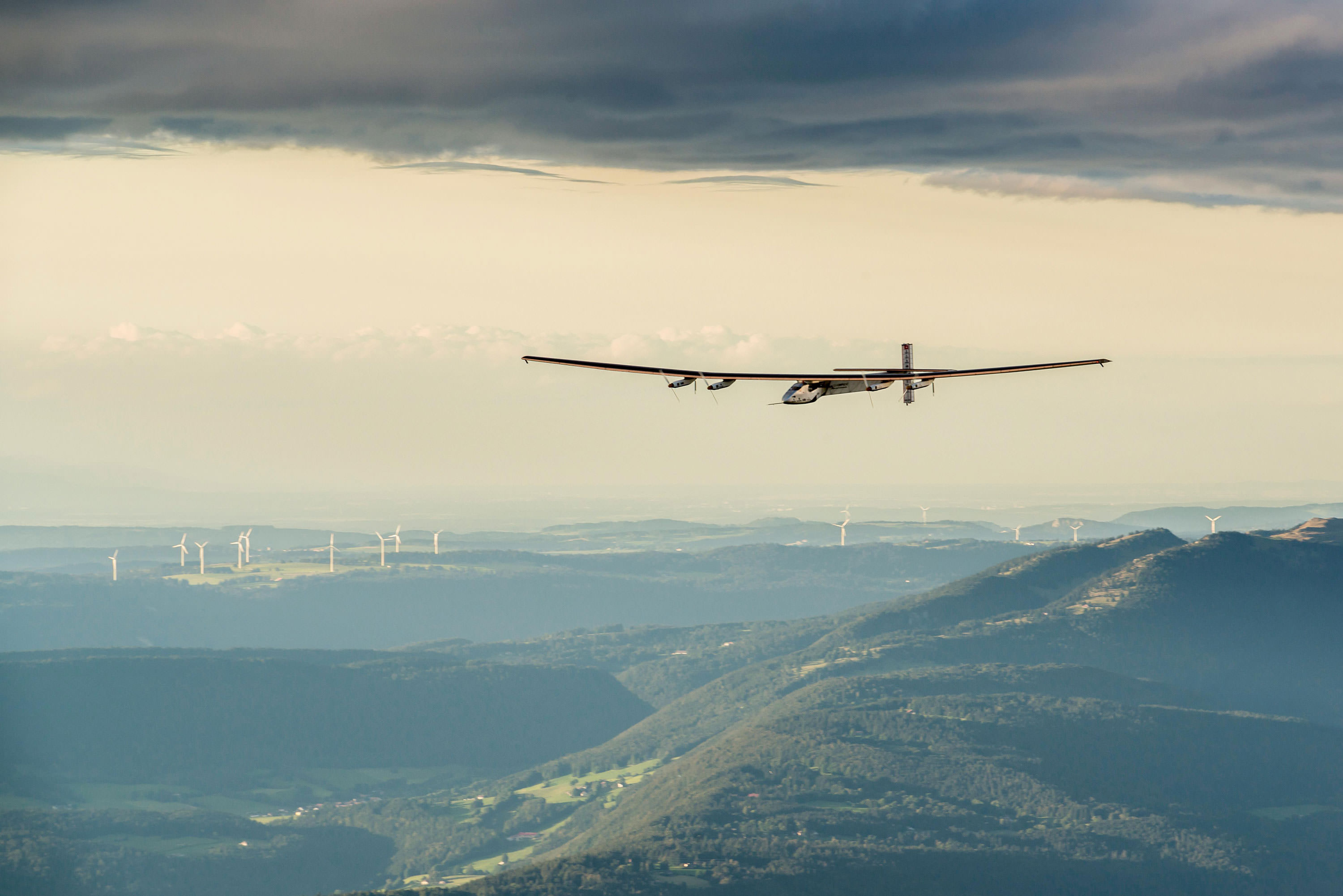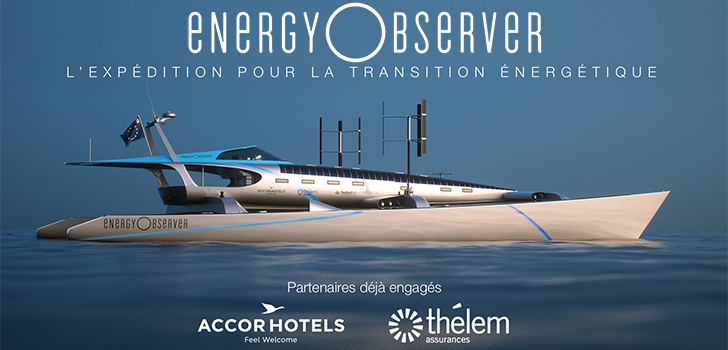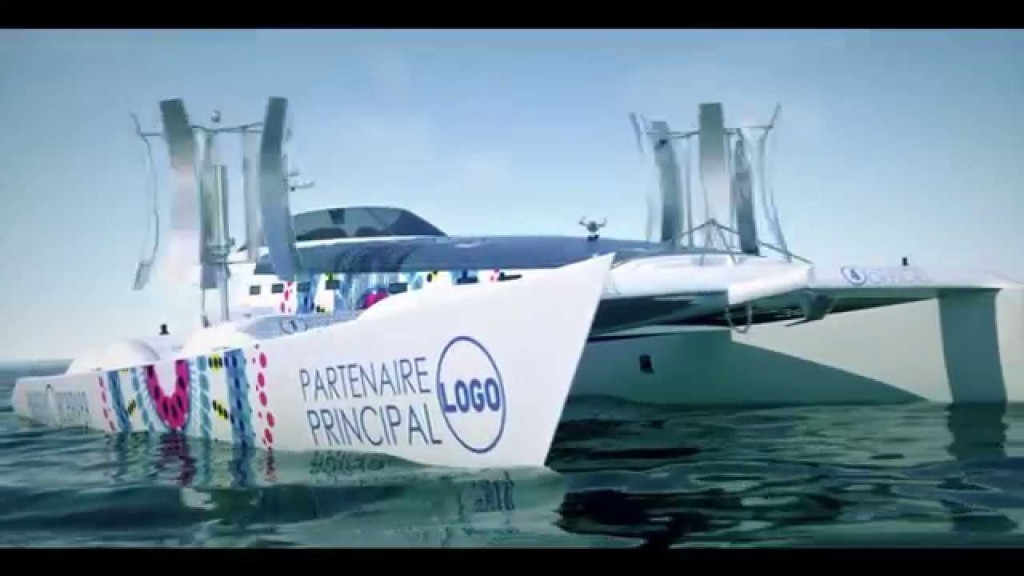Boat Circumnavigates the Globe on Clean Energy

Dubbed the Solar Impulse of the Seas, a multi-hulled catamaran that won the Jules Verne trophy for a non-stop sail around the world in 1994, has been bought for 500,000 euro (just over half a million dollars) and extended by 6 meters to 30.5m (100 feet). The aim: to create Energy Observer, the first-ever vessel to circumnavigate the world, powered solely by self-manufactured hydrogen together with renewable energies — namely, the sun and the wind.
Energy Observer follows on from the green flight of Solar Impulse — a plane that flew around the world in July 2016, using renewable energy.
“It accomplished) what everyone said was impossible,” said Jerome Delafosse, co-founder of the Energy Observer project.

Solar Impulse was seen as a prototype for the use of clean, non-carbon emitting energies on land and on sea:
“The three record-breaking solo flights of André Borschberg from Nagoya to Hawaii and Bertrand Piccard from Hawaii to San Francisco and later New York to Seville give a clear message: everybody could use the same technologies on the ground to halve our world’s energy consumption, save natural resources and improve our quality of life,” according to the Solar Impulse website.

Inspired by the plane’s ground-breaking flight, Delafosse — a naval officer, scuba diver and professional film maker — and his partner, Victorien Erussard, plan for the $4.72 million boat to set off on its inaugural voyage in February 2017. It will sail for six years, visiting 50 countries, three oceans — from the Mediterranean to the Atlantic to the Pacific — and 101 ports. The boat will serve as a floating laboratory to showcase its clean energy sources. Though this will cost around 4 million euro per year, the team is confident they will raise adequate funding.
“For the first time, Energy Observer will allow us to explore the oceans without leaving any trace behind us,” said Delafosse.

The pioneering vessel was designed together with a team of naval architects from the CEA-Liten research institute in Grenoble, France. The team is dedicated to the development and use of renewable energy technologies.
According to Didier Bouix, CEA-Liten’s head of the Energy Observer project, hydrogen can store 20 times more energy than conventional batteries. The hydrogen will be released from the H2O water molecule to back up the sun and wind power generated by the boat’s solar panels and wind turbines:
“The plan is for the boat’s batteries, which will feed the electric motors, to be powered in good weather by solar and wind energy… If there’s no sun or wind, or if it’s night, stored hydrogen — generated by electrolysis powered by the solar panels and two wind turbines — will take over,” Delafosse said.

The implications for the successful navigation of the globe by the Energy Observer from February 2017 stretches further than just the use of clean energy by sea-going vessels, 96-percent of which currently use carbon-emitting fossil fuel power.
There is exciting potential for this energy model to be used on a far greater scale:
“Energy Observer is emblematic of what will be the energy networks of tomorrow, with solutions that could even be used within five years,” said Florence Lambert, CEA-Liten director. “For example, the houses of tomorrow could incorporate a system of hydrogen storage, which is produced during the summer months and then used in the winter.”




